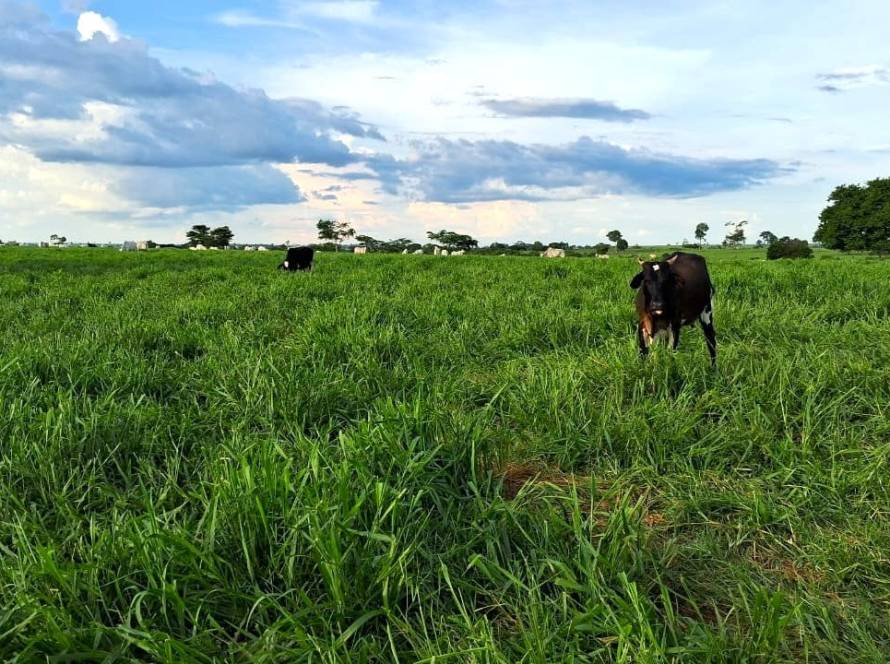State agricultural inspectors from the Goiás Agricultural Defense Agency (Agrodefesa) are in the field monitoring the whitefly (Bemisia tabaci) and viruses associated with common bean crops in Goiás. The action is being carried out in 12 municipalities with a history of bean cultivation in at least two harvests, such as Campo Alegre de Goiás, Água Fria de Goiás, Catalão, Alto Paraíso de Goiás, Ipameri, Cabeceiras, Jataí, Cristalina, Mineiros, Formosa, Rio Verde and São João d'Aliança.
The work, in partnership with the Federal University of Goiás (UFG), Embrapa Rice and Beans and the Ministry of Agriculture and Livestock (Mapa), meets one of the conditions established after the temporary suspension of the sanitary gap for bean crops in part of the state of Goiás. Of the municipalities monitored, only Jataí, Mineiros and Rio Verde maintain the mandatory sanitary gap. The initiative aims to evaluate the impacts of this withdrawal and provide technical data that will support future decisions on whether or not to continue the suspension in the other municipalities.
According to Leonardo Macedo, Plant Health Manager at Agrodefesa, whiteflies are one of the main threats to bean crops and require extra attention. “This insect vector has a high potential to cause direct damage, such as sucking sap and inoculating toxins, as well as indirect damage, the main one being the transmission of viruses such as golden mosaic. These diseases compromise the vegetative and reproductive development of the plant, directly impacting productivity and grain quality,” he explains.
According to him, the presence of whiteflies in high populations can lead to almost total crop loss. “Therefore, even with the temporary suspension of the sanitary gap in some municipalities, it is essential that producers adopt the recommended phytosanitary measures. We are monitoring closely to ensure the sustainability of production and the health of the crop in Goiás,” says Leonardo Macedo.
The coordinator of the Agrodefesa Large Crops Program, Mário Sérgio de Oliveira, emphasizes that the monitoring methodology follows a strict technical protocol developed by Embrapa Rice and Beans. “Two samplings are carried out, the first 20 days after sowing and the second 45 days later. The field teams assess the presence of the insect and symptoms of viruses in the crops, in addition to collecting leaves that are sent to the Federal Laboratory of Agricultural Defense (LFDA) of the Ministry of Agriculture, Livestock and Food Supply (MAPA) to confirm the occurrence of the golden mosaic virus and/or carlavirus. The data from this monitoring will be included in a technical report that will support future decisions regarding the sanitary gap policy in the state,” he explains.
Plant health
Since the 1970s, the whitefly has been considered one of the most destructive pests for common beans in Brazil. In addition to causing direct damage, the insect excretes a sugary substance that promotes the growth of fungi, compromising photosynthesis and plant respiration. Its main impact, however, is its ability to transmit viruses, such as golden mosaic and carlavirus, which can make harvesting impossible.
The sanitary gap for beans was established in Goiás 10 years ago as a phytosanitary control measure. In 2024, it was carried out from September 20 to October 20 in 57 municipalities, according to ordinance no. 1,107, of May 8, 2024, of the Ministry of Agriculture, Livestock and Supply. In the others, the Ministry accepted Agrodefesa's proposal for a temporary suspension for two years, provided that the Agency carries out monitoring with the objective of providing subsidies to evaluate the effectiveness of the new division and verify whether the withdrawal of the measure in some municipalities will not result in further losses for the state's bean producers.
“With ongoing monitoring, Agrodefesa reinforces its commitment to plant health protection, agricultural productivity and the strengthening of the rural economy in Goiás,” says the president of Agrodefesa, José Ricardo Caixeta Ramos.
The importance of the measure is also related to the expressiveness of the crop in the state. According to the Systematic Survey of Agricultural Production (LSPA), by the Brazilian Institute of Geography and Statistics (IBGE), Goiás is expected to register growth in bean production in 2025. The estimate is that the third harvest will reach 243.8 thousand tons — an increase of 7.7% compared to the previous harvest — consolidating the state as one of the largest national producers of the grain, an essential food on the tables of Brazilians.


